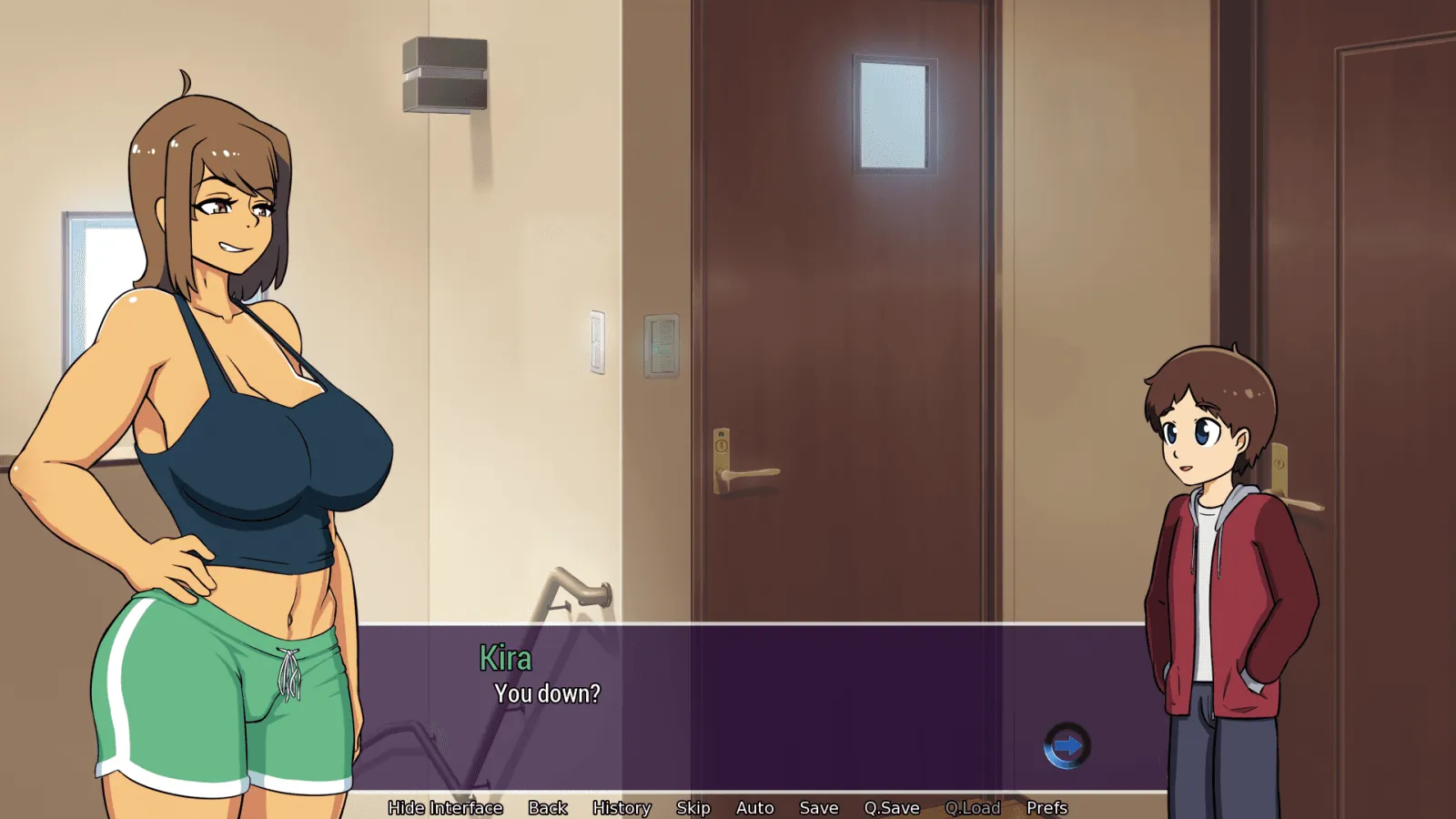
Play Returning to Mia
Returning to Mia review
Explore Gameplay, Storyline, and Features of Returning to Mia
Returning to Mia is a captivating interactive game that continues the story from its predecessor, Summer with Mia. This article dives into the game’s immersive narrative, gameplay features, and what players can expect as they reunite with Mia and navigate complex relationship choices. Whether you’re a returning player or new to the series, this guide offers valuable insights and practical advice to enhance your experience with Returning to Mia.
Understanding Returning to Mia: Story and Gameplay
If you’re diving into Returning to Mia, you’re likely already invested in the complex, emotionally charged world that began in Summer with Mia. This sequel doesn’t just continue the story; it deepens it, pulling you back into a narrative shaped by past decisions and present dilemmas. 🎭 Understanding the Returning to Mia storyline is key to appreciating this interactive experience, as it masterfully blends regret, desire, and the haunting question of second chances.
This chapter will guide you through the heart of the game: its poignant narrative and dynamic mechanics. We’ll explore what makes the Returning to Mia gameplay so compelling, how your Returning to Mia choices sculpt the path forward, and the intricate web of relationships with the unforgettable Returning to Mia characters. Let’s get started.
What is Returning to Mia About?
Picking up after the events of Summer with Mia, this chapter of the story finds the protagonist at a crossroads. The summer fling, filled with passion and confusion, is over, but the echoes remain. The Returning to Mia narrative isn’t about a simple reunion; it’s a deep dive into consequences. You’re back in a world where every character remembers your previous actions, and the weight of your past choices hangs over every new interaction. 😥
The core of the Returning to Mia storyline is emotional maturity. Where the first game was about discovery and impulse, this sequel challenges you with complexity. Mia herself is different, and your relationship has evolved into something more fragile and nuanced. The game brilliantly explores themes of accountability and the possibility of redemption. Is it possible to fix past mistakes, or are some bonds forever changed? This interactive game Returning to Mia makes you feel the stakes personally.
I remember my first playthrough; I assumed I could just pick up where I left off, being the “cool” guy. The game immediately humbled me. A flippant choice I made early on, which seemed minor at the time, came back to create a significant rift with another character later. It taught me that the Returning to Mia storyline is a carefully woven tapestry, and every thread matters.
Key Gameplay Mechanics
So, how to play Returning to Mia effectively? It’s all about engagement. The Returning to Mia gameplay is built on a foundation of exploration, dialogue, and decision-making. You’ll navigate detailed environments, talk to a cast of characters, and face choices that range from simple conversations to major moral dilemmas. 💬
The most critical mechanic is the decision-making system. Unlike games where choices are clearly labeled “good” or “evil,” the choices here are refreshingly ambiguous. You’re often choosing between two understandable, yet conflicting, perspectives. This makes the Returning to Mia gameplay incredibly immersive. You’re not playing a hero or a villain; you’re playing a person.
Here’s a breakdown of the core mechanics:
| Mechanic | Description | Impact |
|---|---|---|
| Dialogue Trees | Conversations with multiple response options, each carrying a unique tone (supportive, aggressive, flirtatious, etc.). | Directly influences character affinity and opens or closes future story branches. |
| Exploration | Moving through various locations to find items, clues, or trigger encounters. | Unlocks backstory, provides context for decisions, and can lead to unique scenes. |
| Relationship Points | A hidden system tracking your standing with each major character. | Determines which endings you can achieve and how characters behave toward you. |
| Timed Choices | Certain decisions must be made within a limited time frame. | Adds pressure and reflects impulsive, real-life decision-making. |
My biggest piece of advice for the Returning to Mia gameplay? Take your time. Rushing through dialogues or spamming the skip button is a surefire way to miss subtle cues. The characters’ body language and word choice often hint at the best approach. For instance, if Mia seems withdrawn, a pushy, direct question might cause her to shut down, while a patient, empathetic response could encourage her to open up. 🕰️
Character Relationships and Choices
The soul of this interactive game Returning to Mia lies in its characters. The returning cast, including Mia, her sister, and friends, have all grown, and your relationships with them are the primary drivers of the Returning to Mia narrative. Your Returning to Mia choices are the tools you use to build, repair, or sometimes sever these bonds. 💔❤️
Each character has their own desires, fears, and memories of your past actions. A character you might have overlooked in the first game could become a central figure here, depending on your choices. This complexity is what makes the cast of Returning to Mia characters feel so authentic. They aren’t just plot devices; they feel like people with their own agency.
Pro Tip: Keep a mental (or even physical) note of important conversations. Remembering a character’s personal goal or a past failure can give you the perfect dialogue option when it matters most.
Let’s look at an example of a key decision point and its impact on the storyline.
Example: The Rooftop Conversation with Mia
About halfway through the game, you find Mia on a rooftop, visibly upset about the direction of her life. The conversation is a pivotal moment for the Returning to Mia storyline.
- Choice A (Ambitious): You encourage her to focus on her career, to be practical and secure her future. You argue that some dreams are for when you’re more established.
- Choice B (Supportive): You tell her to follow her passion, even if it’s risky. You reassure her that you believe in her talent.
In my first playthrough, I chose the “ambitious” path, thinking I was being a responsible and caring influence. The immediate result was Mia agreeing, but with a sense of resignation. Later, this choice locked me out of a major story arc where Mia pursues her artistic dreams. Our relationship became stable but somewhat hollow, lacking the shared excitement and risk that defined other paths.
On a second playthrough, I chose the “supportive” option. While this initially seemed riskier, it unlocked a series of new scenes where we worked together on her project. This path was messier—filled with setbacks and drama—but it led to a much more passionate and deeply connected ending. It completely changed my perception of the Returning to Mia characters and their potential.
This example shows that there’s rarely a single “correct” choice. The best Returning to Mia choices are the ones that align with the character you want to be and the relationships you want to cultivate. Do you want a safe, stable connection, or a passionate, unpredictable journey? The power is in your hands. 🤔
How to approach these decision points to maximize engagement:
- Role-play consistently. Decide on your protagonist’s core personality early on and try to make choices that fit that persona.
- Embrace imperfection. Don’t reload a save immediately after a choice seems to backfire. Some of the most memorable moments in the Returning to Mia narrative come from dealing with the consequences of a mistake.
- Talk to everyone. Secondary characters often provide crucial insights into the main Returning to Mia characters, influencing your understanding and options.
Ultimately, mastering the Returning to Mia gameplay is about understanding that every interaction is a building block. The way you navigate the delicate web of Returning to Mia choices defines your unique experience, making each playthrough a personal story of connection, regret, and hope.
Returning to Mia offers a rich, interactive experience that builds on its predecessor’s story with engaging gameplay and meaningful choices. By understanding the storyline and gameplay mechanics, players can fully immerse themselves in the world and relationships within the game. Whether you seek to explore every narrative path or focus on specific outcomes, this guide equips you with the knowledge to enjoy Returning to Mia to its fullest. Dive in and discover where your choices will lead you.





















